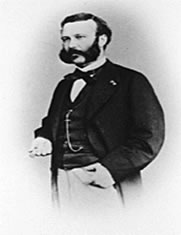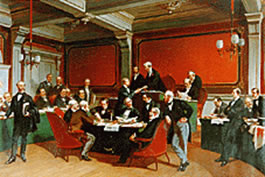History

In honor of Henry Dunant, the movement established the red cross on a white field (the reverse of the Swiss flag) as its emblem. The sign of the Red Cross plays a protective role and an indicative role as well. The battle of Solferinowas fought in northern Italy in 1895; the confrontation between French and Austrian armies left the battlefield strewn with more than 40 000 wounded. At the same time, Swiss businessman Henry Dunant (Jean Henri Dunant) was passing through Castiglione where he witnessed the horrifying sight of countless wounded people so he worked with the locals to help the wounded, because the army medical services were overwhelmed. A small church in Castiglione served as an improvised shelter for the wounded. Upon his return home to Geneva, he wrote “A Memory of Solferino“, in which he described the horrifying events that took place after the battle. In the book, he proposed the creation of an international organization to provide help to wounded soldiers in times of war. In 1863, Henry Dunant together with four other citizens of Geneva, founded the International Committee for Relief to the Wounded which would later become the Red Cross Movement. That same year, the first national Red Cross societies were founded.
In 1864, the First Geneva Convention was adopted, and three more Geneva Conventions were added afterwards.
- First Geneva Convention for the Amelioration of the Condition of the Wounded and Sick in Armed Forces in the Field
- Second Geneva Convention for the Amelioration of the Condition of Wounded, Sick and Shipwrecked Members of Armed Forces at Sea
- Third Geneva Convention relative to the Treatment of Prisoners of War
- Fourth Geneva Convention relative to the Protection of Civilian Persons in Time of War
The conventions have been modified with three amendment protocols:
 1. Protocol I (1977) relating to the Protection of Victims of International Armed Conflicts
1. Protocol I (1977) relating to the Protection of Victims of International Armed Conflicts
2. Protocol II (1977) relating to the Protection of Victims of Non-International Armed Conflicts
3. Protocol III (2005) relating to the Adoption of an Additional Distinctive Emblem (the Red Crystal emblem) In honor of Henry Dunant, the movement established the red cross on a white field (the reverse of the Swiss flag) as its emblem.
The sign of the Red Cross plays a protective role and an indicative role as well. Its protective role is significant during armed conflicts, when the emblem is used as a protection symbol to mark persons and objects that are working in compliance with the rules of the Geneva Conventions. .Its indicative role is significant during peacetime, when the symbol is used as a distinctive logo by organizations which are part of the International Red Cross Movement. The primary mission of the International Red Cross Movement is to alleviate human suffering wherever and whenever possible. The Movement consists of three parts: National Red Cross Societies incorporate the Movement`s primary mission, promote its fundamental principles and human values, lead and organize relief assistance missions responding to emergencies and mostly deal with health-related and social programs within their respective states.
The International Federation of Red Cross and Red Crescent Societies (IFRC) mainly focuses on peacetime activities, provides relief assistance in response to emergency situations, coordinates activities between the National Societies, promotes human values and respect for the Geneva Conventions. The International Committee of the Red Cross (ICRC) is an impartial, neutral, and independent organization whose exclusively humanitarian mission is to protect the lives and dignity of victims of war and internal violence and to provide them with assistance and to promote human values, RC fundamental principles and the International Humanitarian Law. The work of the International Red Cross and Red Crescent Movement is based on SEVEN BASIC PRINCIPLES:
- History
- Humanity
- Unity
- Independence
- Neutrality
- Universality
- Voluntary service
- Impartiality

